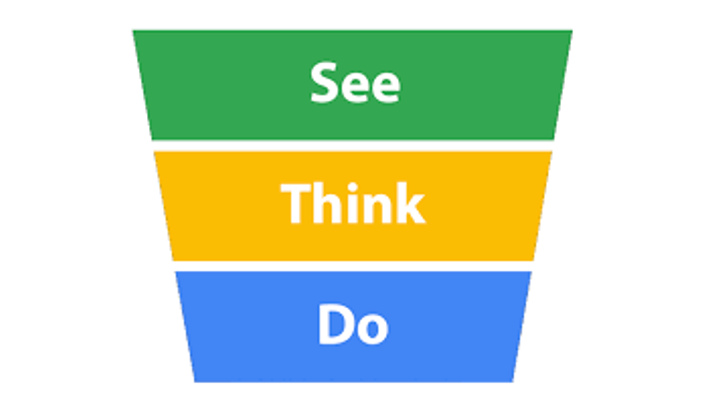Have you recently renovated your home, booked a holiday or bought a new car? Or even started thinking about any of the aforementioned things. If yes, you surely would have done a google search. For those who do not intend to do any of these three in the near future, don’t fret! Just keep in mind that when do get to that stage (holds true also for any other slightly high involvement purchase, where you need to do a google search), you are also signing in for a free lesson in marketing. Let me explain how.
Most of us are now used to seeing banner advertisements from brands on our social feeds. These often correspond to the products categories that we have searched for in the recent past. Till around a year ago, it used to give me a creepy feeling of being spied upon but now I have learnt to co-exist with them. When I am ready to buy something, let’s say a car, I want to look at these advertisements and think they are very useful. But on other occasions (very few!) I find them irritating and ill-timed.
Several weeks ago, I came across a very simple content marketing model propagated by a digital marketing evangelist Avinash Kaushik. It’s called the See, Think, Do model. I have tried using that model on various categories and it works like magic.
- SEE: The term ‘See’ refers to the total addressable market, which includes everyone who can afford to buy the product or service. Here it is not relevant if they have any intention of buying the product/service or are they even thinking about it. As an example, let’s consider all young executives (25-35 years old) with an annual income of more than thirty lacs per annum. This set can be considered a potential addressable market for a vacation in South East Asia.
- THINK: This segment refers to those people who have started thinking about buying it but are not yet ready to take the plunge. Assume that you are expecting a promotion in December 2019 and may want to celebrate by going on a vacation in the first quarter of 2020. You have also discussed this possibility with your spouse. You are in the ‘Think’ stage.
- DO: Those who are actively seeking to purchase a product or service.
Let’s now apply this concept to the target audience being pursued by a company providing solar rooftop solutions to both commercial clients and institutional clients. Let’s examine at what stage (of the See, Think and Do model) the potential clients are likely to be at. To make the task simpler, let’s take a subset of global car manufacturers and reputed educational institutions. In all likelihood a majority of the car manufacturers would be at a DO stage and another big chunk would be at a THINK stage. The reason being, globally car manufacturers are facing pressure to reduce carbon emissions and hence are actively on the lookout for ways to go green. Car plants are usually spread over hundreds of acres with huge spaces available for setting up solar rooftop plants. Hence, it more than likely that most of them would have already explored the option of solar energy as it has an additional benefit of substantial cost savings in the medium to long term. Few subsegments of the commercial and institutional buyers may be at the SEE stage as well.
Now, let’s assume that you are the business head of the company. Your marketing manager comes up with a suggestion of creating a neutral educational website, without your company’s branding. The site will have all the information on why you should get a rooftop solar plant, what to look for in the solution, factors to consider while choosing a solar rooftop partner, etc., Also he wants to create a short animation video on how can people save money by investing in a solar rooftop solution and wants to explore email marketing as well. He obviously wants more budgets to promote the video, organise for email marketing and also to drive traffic to the website. All this will be in addition to some of the other traditional marketing activities that you are doing like participating in trade fairs, sponsoring trade events, filling out tenders, reaching out through intermediaries/ distributors and already have your company website up and running. However, you are not seeing any increased business from these marketing activities and are under pressure to increase your market share. Will you allow him to go ahead or not? Before hazarding a guess, do read on.
Most companies approach all these three subsegments with the same message and through similar channels, thereby wasting their marketing budgets. As these subsegments are not at the same stage of their decision making cycle, their requirements are completely different and the same messages will not work for them. For the DO segment we should give them a reason to buy. It could be cost, service, total cost of ownership, quality – depending upon your product or service. Similarly people in the THINK segment are not yet ready to buy and are looking for more information to get to a stage where they can even consider comparing various brands. And the rest of the audience is not interested in the product category as of now. Now if we reach out to the people in the THINK or SEE stage with a buy message, it is not going to work and vice versa for the ones in the DO stage.
The next question is how does one find out who is at what stage. The simple answer is through research! Research will not only help answer the questions about the stage but also provide insights on the barriers and drivers for these sets of possible consumers. This information is essential to create messages that will resonate with these particular audience. Many small and medium businesses, especially in the B2B space are averse to spending money on research. They feel it is a waste of money, but are ready to spend millions of rupees into outreach. This vicious cycle leads to wastage of marketing budgets.
By using the above extremely simple model and investing in research, companies can make substantial savings in their marketing budgets and make it more effective.



Well, well… this is actual real-life-inspired advice. 🙂